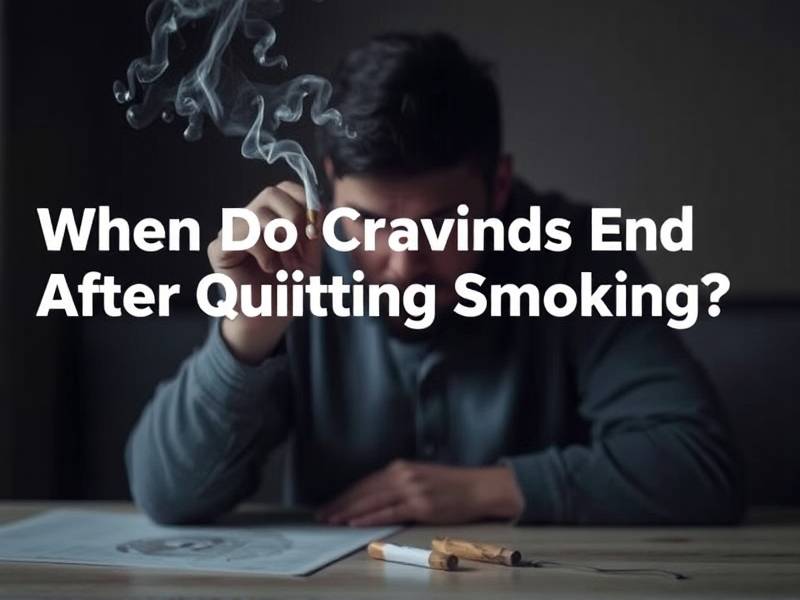When Do Cravings End After Quitting Smoking?
Understanding the Timeline of Smoking Cravings Post-Quit
Introduction: Quitting smoking is a significant life change that can lead to numerous health benefits. However, one of the most challenging aspects of this journey is dealing with nicotine cravings. Many smokers often wonder, "When do cravings end after quitting smoking?" In this article, we will delve into the timeline of cravings and provide insights to help you navigate through this phase.
Cravings: The Initial Phase After quitting smoking, it's common to experience intense cravings within the first few days. These cravings are often strongest during the initial phase, which typically spans from 24 to 72 hours post-quit. During this time, your body is adjusting to the absence of nicotine and may exhibit symptoms like irritability, anxiety, and headaches.

The Role of Nicotine Withdrawal Nicotine withdrawal is a natural response as your body adjusts to not having nicotine. The duration and intensity of withdrawal symptoms can vary from person to person. While some individuals may experience mild symptoms, others might find them more challenging.
The Decline in Cravings After the initial intense phase, cravings tend to diminish gradually over time. Studies have shown that the frequency and intensity of cravings decrease significantly after approximately two weeks post-quit. By one month, many individuals report that their cravings are significantly reduced compared to when they were smoking.
Tips for Managing Cravings

- Stay busy: Engage in activities that keep your mind off smoking.
- Avoid triggers: Identify situations or places that trigger your cravings and steer clear of them.
- Seek support: Share your journey with friends, family, or support groups.
- Use nicotine replacement therapy (NRT) or prescription medications if needed.
- Practice mindfulness: Focus on your breathing and stay grounded during moments of craving.
The Role of Exercise Regular exercise has been found to help reduce nicotine cravings and improve overall well-being post-quit. Physical activity increases endorphin levels in the brain, which can help alleviate withdrawal symptoms and improve mood.
Long-term Cravings Management It's important to note that while intense cravings usually diminish within a few weeks post-quit, occasional urges may persist for several months or even years. Developing strategies for managing these occasional cravings is crucial for long-term success.
Conclusion: Quitting smoking is a journey filled with challenges, including dealing with nicotine cravings. Understanding the timeline of craving duration can help you stay motivated throughout your quit journey. Remember that support from loved ones, exercise, mindfulness practices, and professional help are all valuable tools in managing these cravings effectively.
Note: This article does not replace professional medical advice or treatment for quitting smoking. For personalized guidance on quitting smoking and managing withdrawal symptoms, consult with healthcare professionals or visit reputable websites such as Smokefree.gov (smokefree.gov).
